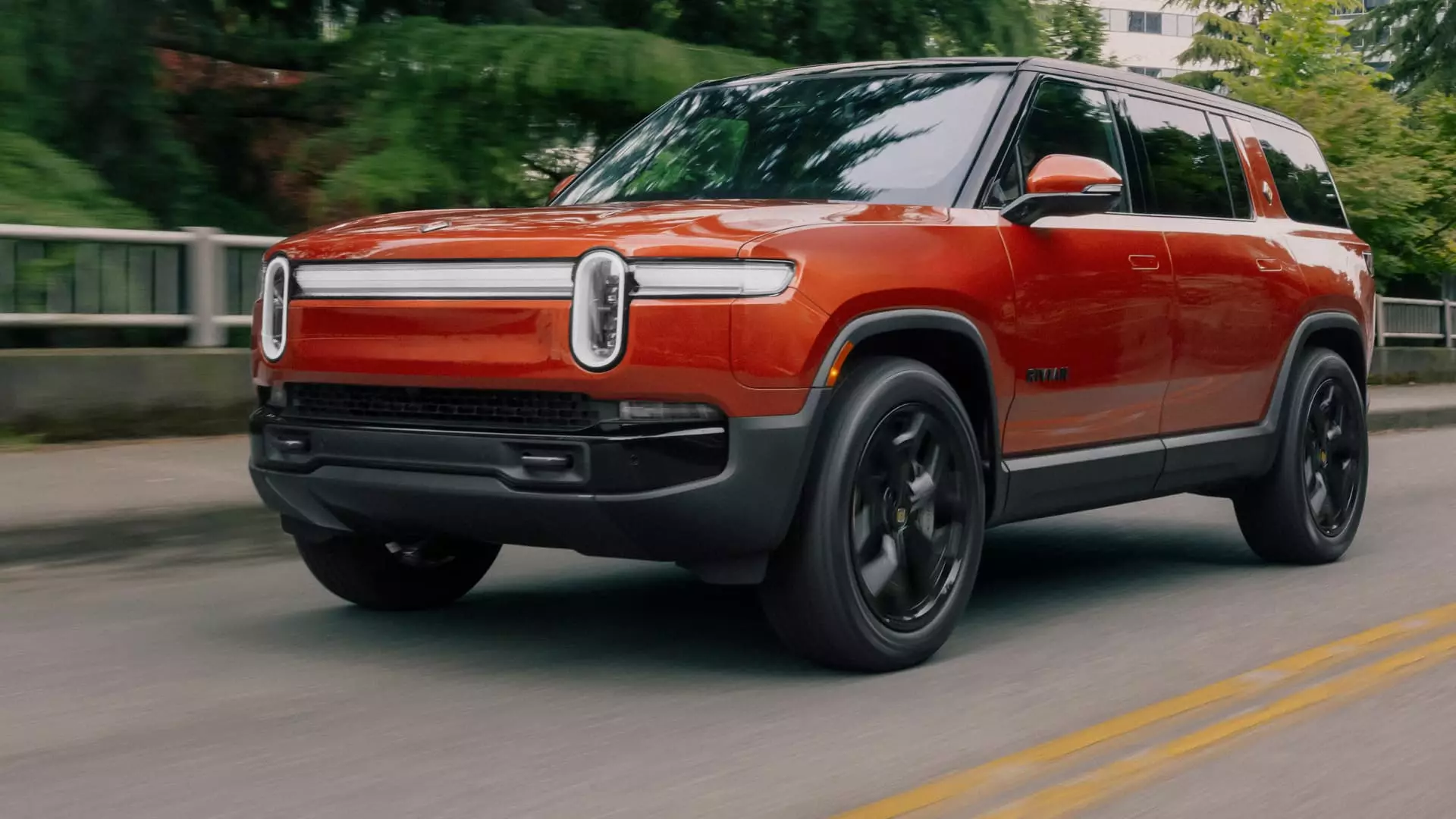Rivian Automotive, a prominent player in the electric vehicle (EV) market, recently announced a significant milestone by exceeding Wall Street’s expectations for its fourth-quarter earnings. Most notably, Rivian achieved its first gross quarterly profit—an essential benchmark that investors have been vigilantly monitoring. The company’s gross profit for this period reached an impressive $170 million, a notable achievement considering the turbulent environment in which many EV manufacturers operate. This development arrives as Rivian balances its aspirations for future growth with the daunting reality of lower sales projections in the upcoming years.
Despite celebrating a profitable quarter, Rivian’s outlook for 2025 appears tempered by a challenging sales environment. As part of its guidance, the company anticipates delivering between 46,000 to 51,000 vehicles, a decrease from the 51,579 units sold the previous year. This expectation is compounded by a forecasted adjusted loss range of $1.7 billion to $1.9 billion for 2025, which signals a narrowing from the $2.69 billion loss recorded in 2024. Investors are left to ponder how Rivian plans to navigate these uncertain waters after experiencing a tumultuous market in prior years.
In the immediate aftermath of this earnings report, Rivian’s stock experienced a slight uptick of about 7% during after-hours trading; however, it ultimately closed lower at $13.61 per share, reflecting a decline of 2.3%. This volatility illustrates the market’s complex reaction to the news: while the achievement of a gross profit is a positive indicator, the cautious sales forecast paints a more nuanced picture of the company’s trajectory. CEO RJ Scaringe mentioned to CNBC that various external uncertainties could significantly alter Rivian’s forecast. This includes concerns about the potential loss of federal incentives for electric vehicles and fluctuating tariff policies that could impede the company’s operations.
In Rivian’s shareholder letter, the company emphasized that a multitude of external factors could influence its outlined expectations for 2025. The company remains vigilant in monitoring changes in government policies and broader economic conditions, recognizing the delicate interplay between market dynamics and their operational goals. CFO Claire McDonough noted the company has prepared for “hundreds of millions” in expected EBITDA impacts due to sales declines driven by possible reductions in tax credits. This foresight demonstrates Rivian’s proactive approach to potential setbacks, yet the looming specter of regulatory shifts persists, complicating matters further.
Looking ahead, Rivian has set a capital expenditure target between $1.6 billion to $1.7 billion for the current year, up from $1.41 billion previously. This increase reflects the company’s strategic push towards enhancing production capabilities and advancing new vehicle models, particularly the anticipated R2 midsize vehicles set for launch in 2026. However, this growth comes with trade-offs, as Rivian has announced plans to temporarily idle its sole manufacturing facility in Normal, Illinois, later this year for necessary retooling. McDonough was optimistic about the potential of the R2 lineup, proposing that it will be transformative for Rivian’s growth and profitability.
Rivian’s financial performance also benefitted from lucrative regulatory credit sales and growing software revenue streams. The automaker reported revenue of $1.73 billion in the most recent quarter, a surge fueled by $299 million derived from regulatory credits, as well as $214 million from software and services. While this reliance on regulatory credits may bolster short-term gains, the volatility of future emissions regulations poses risks that Rivian must navigate carefully. For the entirety of 2024, Rivian’s revenue stood at $4.97 billion—an optimistic growth of roughly 12% year-over-year.
As Rivian Automotive makes strides towards profitability, it simultaneously confronts an intricate web of challenges that could impact its future performance. While the recent achievement of gross profit is noteworthy and indicative of potential improvements, the cautious sales forecast and external pressures signal that the road ahead will require nimble strategic navigation. Rivian’s ability to adapt to shifting market conditions, alongside its commitment to technological advancements and operational efficiency, will ultimately determine its success in the evolving landscape of electric vehicles.

